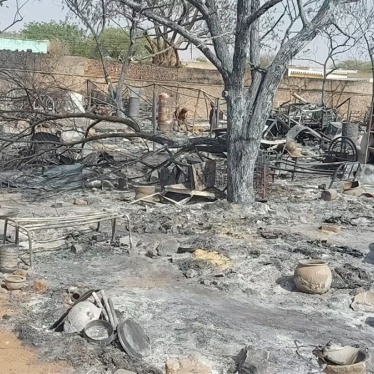In early May 2022, Russian forces fired a munition that struck a museum complex including the final home of the 18th-century Ukrainian philosopher and poet Hryhorii Skovoroda. The attack sparked a fire that raged for nearly nine hours. By the time the blaze was extinguished, almost all that remained were scorched walls and a pockmarked statue of the national figure.
Skovoroda’s philosophy of rights and equality and his simple way of life have left a lasting impact on Ukraine’s culture. Several Ukrainian universities now bear his name, and his image appears on the 500 hryvnia note. While some of the museum exhibits had been removed earlier, the destruction of the historic site deeply affected Ukrainians. Volodymyr Yermolenko, president of PEN Ukraine, described Skovoroda as “one of the pillars of Ukrainian culture.” University of Cambridge professor Olenka Pevny said the attack on the museum struck “at the intellectual core of Ukrainian identity.”
Destroying Cultural Heritage: Explosive Weapons’ Effects in Armed Conflict and Measures to Strengthen Protection, a recent report that I wrote for Human Rights Watch and Harvard Law School’s International Human Rights Clinic, identifies patterns of harm from explosive weapons to cultural heritage and, by extension, to civilians. It uses examples from Ukraine, Gaza, Yemen, and other areas of armed conflict affected by explosive weapons, which include aerial bombs, artillery and mortar projectiles, rockets, and missiles.
The report also offers recommendations for how the 2022 Political Declaration for Protecting Civilians from the Use of Explosive Weapons in Populated Areas, which 87 nations have endorsed, can serve as a valuable tool for reducing harm to cultural heritage.
Experts interviewed for the report explained that cultural heritage is a broad concept that encompasses historic buildings and houses of worship, museums and archives, public squares, and performance centers. It can date to ancient or modern times and have local significance or universal value.
As the report makes clear, “[h]arm to cultural heritage is … inseparable from harm to the civilian population.” Damage to cultural heritage has physical, psychological, psychosocial, and economic effects on the people who care about and depend on it. States should therefore address harm to both cultural heritage and people when articulating the problem and designing a solution.
With this principle in mind, States should look to the Declaration as a framework for recognizing the damage to and destruction of cultural heritage and the associated harm to civilians. To advance protection, they should also apply its comprehensive preventive and remedial measures to situations involving cultural heritage. Training, data collection, and humanitarian access are just a few of the provisions that States can use. If implemented properly, the Declaration can have a significant impact on protecting irreplaceable cultural heritage, both legally and in practice.
Oslo Conference on the Political Declaration
In April, more than 80 countries and 50 organizations in Oslo, Norway, for the first conference to review the Declaration. Speakers highlighted the broad devastation that the use of explosive weapons is currently causing in urban areas of Gaza and Ukraine as well as the urgent need to universalize and implement the Declaration.
The Declaration seeks to address the humanitarian consequences of the use of explosive weapons in populated areas. Explosive weapons caused harm to civilians in at least 75 countries and territories in 2023, according to the Explosive Weapons Monitor, a civil society initiative that researches and analyzes harms from and practices of explosive weapon use.
The Declaration recognizes that this method of war causes physical and psychological injuries, infrastructure damage, impacts on health care and education, forced displacement, and environmental harm. It further notes “the damage and destruction of … cultural heritage sites” from explosive weapons, which it says “aggravates civilian suffering.”
To address these problems, the Declaration establishes political commitments to enhance international humanitarian law’s protections for civilians before, during, and after attacks. For example, it calls for States to adopt new and improve existing military policies and practices. It commits States to restrict or refrain from the use of explosive weapons in populated areas when harm to civilians or civilian objects is expected. It also addresses the consequences of armed conflict through provisions on assistance to victims.
Explosive Weapons’ Impact on Cultural Heritage
The harm that explosive weapons cause to cultural heritage fits into the Declaration’s framework of direct and indirect effects to civilian objects and civilians.
Through blast and fragmentation effects as well as secondary fires, bombing and shelling can directly damage buildings of architectural, historic, or religious significance. For example, in December 2023, the use of explosive weapons by Israeli forces toppled part of the minaret, crumbled the roof, and left pockmarks in the walls of the Great Omari Mosque, which was originally built in the 7th century and is the oldest mosque in Gaza.
Loss of infrastructure due to attacks with explosive weapons indirectly affects cultural heritage because it can shut down climate control and security systems endangering art, artifacts, and archives. In Iraq, flooding from water pipes hit by missiles damaged buildings containing items of cultural heritage.
Civilians feel the direct consequences of explosive weapons’ impacts on cultural heritage. People who live or seek shelter in cultural heritage sites may be killed or injured during an attack. According to Human Rights Watch’s research, at least 15 of the hundreds of people sheltering in the Donetsk Academic Regional Drama Theater in Mariupol, Ukraine, died during a Russian airstrike on March 16, 2022.
Civilians also experience indirect effects from cultural heritage destruction. They may lose their livelihoods or even their homes when explosive weapons strike cultural heritage sites. In Yemen, damage to such sites in Taizz hurt the tourist industry, and residents of the Old City of Sanaa were forcibly displaced when their homes were destroyed.
Harm to cultural heritage may result in a loss of history. The bombing of Old Sanaa, for example, damaged both a World Heritage Site and buildings that people have lived in continuously since the 11th century.
Explosive weapons can also strike at the heart of a community’s identity, which is often embodied in its cultural heritage. Connections to a place span generations and, in some cases, unify diverse parts of a community.
Responding to the widespread destruction of cultural heritage in Yemen, the archaeologist Lamya Khalidi said, “If you destroy [heritage], you destroy something very intrinsically important to the communities, to the populations, to their identity.” Arwa Othman, a Yemeni author, said that “people are destroyed when their collective memory is destroyed.”
The Declaration as a Tool for Cultural Heritage Protection
The Declaration does more than provide a framework for assessing how explosive weapons cause harm to cultural heritage. Its preventive and remedial measures also provide a means for addressing it. While many of the Declaration’s provisions are relevant to cultural heritage, three exemplify how States can apply its commitments to this context.
First, as States fulfill their preventive commitment to provide “comprehensive training” on law, policies, and practices to protect civilians, they should teach their armed forces, through classroom instruction and simulations, about relevant cultural heritage law and significant monuments in their area of operation. The latter can help them avoid damage to specific sites and build their respect for cultural heritage, which could increase their motivation to protect it.
Second, States should also collect and share data about cultural heritage. Information about the history and physical characteristics of a place or object before and after damage can assist with preservation, restoration, and digital re-creation of places and objects. Understanding the nature of the damage and what caused it can facilitate policy changes to help protect cultural heritage. This information should be shared with international and nongovernmental organizations, affected communities, and other stakeholders to promote monitoring and accountability.
Third, in line with the Declaration’s commitment to provide “rapid, safe, and unhindered humanitarian access to those in need,” States should grant such access to relevant cultural heritage specialists. To help prevent further decay, loss of evidence or information, and looting, it is critical for experts to arrive quickly at damaged cultural heritage sites. States should expedite their visas, remove barriers to importing equipment, and provide safe passage, recommendations often made with regard to humanitarian aid workers.
Strengthening Existing Safeguards
Although it is not legally binding, the Declaration has the potential to bolster existing international protections for cultural heritage.
In contrast to the 1954 Hague Convention for the Protection of Cultural Property in the Event of Armed Conflict, the Declaration uses the term “cultural heritage sites,” rather than “cultural property.” “Cultural heritage,” more common in recent international law, encompasses places and objects of both local and global significance. It also eliminates the connotations of heritage being individually owned.
Unlike its predecessors in international cultural heritage law, the Declaration focuses on the effects rather than the intent of an attack. The Hague Convention, for example, obligates States parties to refrain from directly targeting cultural heritage. Under the Declaration, by contrast, States commit to restrict or refrain from the use of explosive weapons in populated areas when there is an expectation of harm, regardless of whether the attack was intentional. Therefore, the Declaration expands the protection for cultural heritage when an attack involves the use of explosive weapons in populated areas.
While the Hague Convention’s protections have long been watered down by its military necessity exception, the Declaration emphasizes the protection of civilians and does not include such a waiver. The Hague Convention exception relieves States parties from their obligation to protect cultural heritage if military necessity is “imperatively require[d].” Law professor Patty Gerstenblith said that “the scope of the waiver is ‘undefined’ and ‘countries have used [military necessity] to excuse a lot of’ direct and indirect damage to cultural heritage.” Given the humanitarian purpose of the Declaration, its commitments weigh in favor of the protection of civilians and should be applied in that way to the protection of cultural heritage.
Finally, the Declaration adopts a more comprehensive approach to addressing the harm caused by explosive weapons in populated areas. Earlier instruments focused primarily on the conduct of hostilities, but as discussed above, the Declaration includes both preventive and remedial measures. These provisions can be adapted to the cultural heritage context.
Protecting Civilians and Cultural Heritage
At the end of the recent Oslo Conference, Ireland, Norway, and Costa Rica – hosts of the previous, most recent, and next meeting of the Declaration – issued an outcome statement calling for action. It noted that the civilian toll in recent armed conflicts “highlights the urgent need to strengthen the protection of civilians.” The statement also identified specific steps that endorsing States should take to implement the Declaration, such as providing updates on implementation, exchanging best practices, promoting universalization, and cooperating with civil society.
To help fulfill the Declaration’s potential as a humanitarian instrument, endorsing States should take into account the link between the protection of cultural heritage and the protection of civilians and implement the Declaration accordingly. In so doing, they can increase the Declaration’s impact as both a legal instrument and a tool for making change on the ground.






